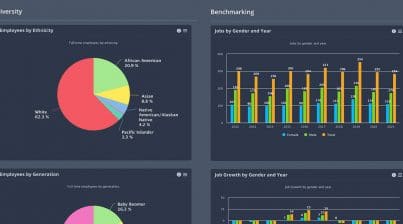Traditionally, HR has been reactive. When decisions must be made, HR looks to the past and makes a decision based on precedence. Similarly, when an employee leaves, HR then begins the process of searching for and hiring a new employee.
But what if companies used a proactive HR strategy instead? What if HR made decisions based on strong evidence and informed predictions about the outcome of those decisions? What if instead of waiting for an employee to leave, HR already had a hiring plan in place?
What Is Proactive HR Strategy?
The problem with reactive HR strategy is it often creates problems such as poor hiring choices, overworked employees, high turnover, and greater expense. Alex Sal of Side Hustle Business Hacks explains the problem by saying that HR workers “often make decisions after the fact, i.e., once something has happened to demand their attention and expertise. Such situations force them to make important decisions without fully understanding the facts and circumstances of the event due to thinking in the moment and not seeing the full picture at hand.” At this point, it’s too late to analyze the situation effectively and make an informed decision.
In contrast, proactive HR departments “study all aspects of the business and create policies that tackle issues before they snowball into massive inconveniences to the entire organization, [which] increases the likelihood of positive results and builds a better workplace for all.” These policies often focus on positive reinforcement, incentivization, and engagement, which helps improve the work environment for everyone and makes HR feel more supportive and less punitive to workers.
Proactive HR Leads To Better Hires, Higher Engagement
Most HR departments hire only when a company has an opening that needs to be filled. If an employee leaves or moves elsewhere within the company, other members of that department are forced to take on extra work until a new employee can be found. This is stressful for employees and disruptive to workflow.
In contrast, proactive HR strategy means planning for turnover and predicting who will leave. If this sounds like a fantasy, think again. Metrics like employee engagement, absenteeism, and employee productivity can be used to accurately predict which employees are likely to leave within the year.
Further, proactive strategies ensure a steady stream of talent enters your business as you need it. Policies like storing applications from promising potential hires and conducting rolling interviews decrease the time to hire because you don’t waste time advertising open positions and screening applicants. Also, when you hire more qualified and skilled employees, they require less training before reaching maximum productivity. In the long term, proactive strategies that bring in higher-quality talent also reduce turnover. After all, if you hire better employees to begin with, you’re less likely to have problems down the line.
Planning Ahead Saves Money
One of the biggest benefits of proactive HR is that it is vigilant. If you’re watching your HR analytics data, your data will show when your company begins to get off course from its goals. This allows you to intervene and get the train back on the tracks before too much damage is done.
Forecasting problems in this way can have a meaningful, positive cost impact on the day to day workings of your company. For instance, losing an employee carries a tremendous cost. On average, it costs six to nine months of an employee’s salary to find their replacement, and it takes almost a full month to find said replacement. During that time, those involved in the hiring process are pulled away from other work, draining productivity. But, as mentioned before, strategic policies can greatly decrease the time to hire, thereby reducing the overall cost to hire.
Similarly, actively aligning talent management goals with overall company goals ensures that each department will have the talent and manpower necessary for them to make meaningful contributions toward those company goals. In turn, inclusion in those goals increases employee engagement, decreasing turnover and improving productivity.
Dynamic HR Policies Justify HR’s Leadership Position
We’ve written about this before, but it’s important enough to repeat: contemporary HR is increasingly becoming a leadership position within companies. But in order to be a leader, you must be able to contribute to the decisions that define your company. This means using your HR analytics to draw sound, evidence-based conclusions, set actionable goals that will drive your company forward, and effectively communicate the relevance of your work to other department leaders who don’t necessarily understand or appreciate the importance of Human Resources.
If you’re ready to transform into a proactive HR department, you’re going to need a top-notch HR analytics dashboard that brings all your people data to one place. Schedule a demo to find out how Employee Cycle can do this for you.












